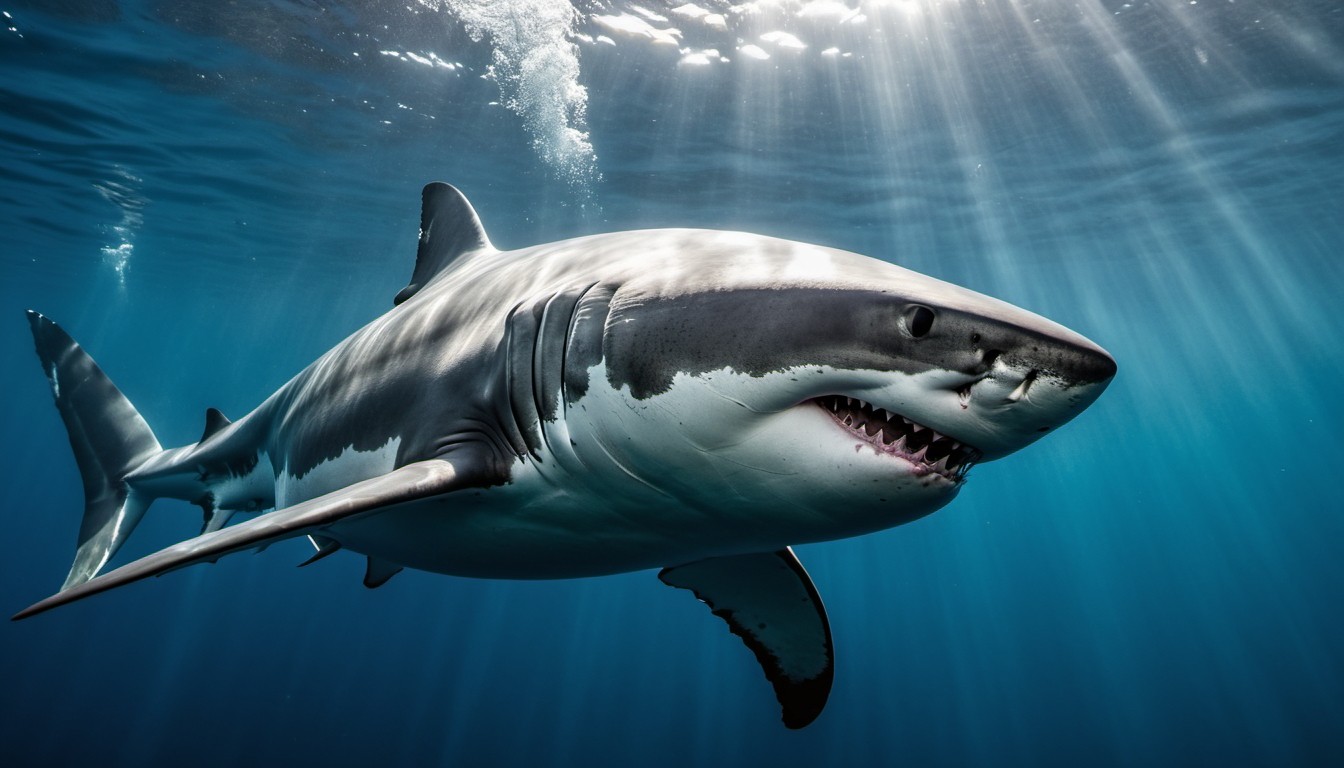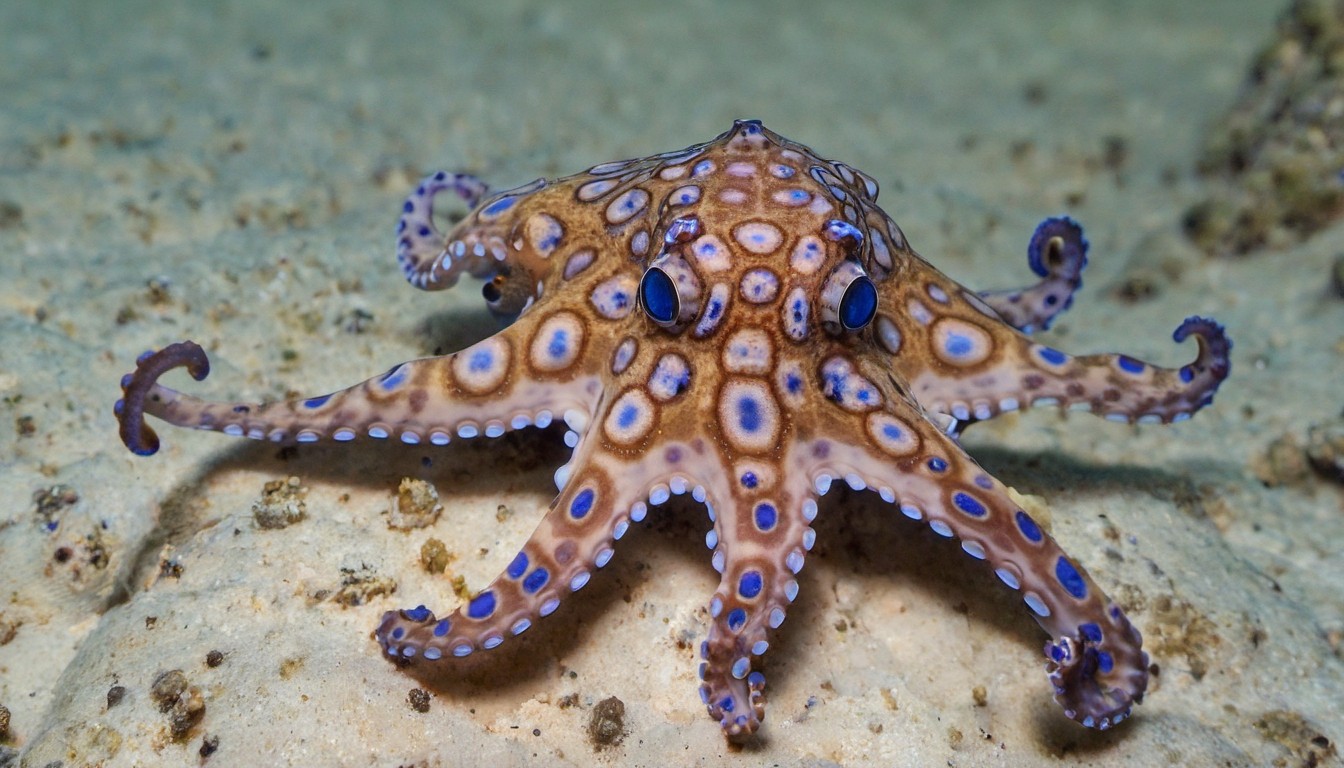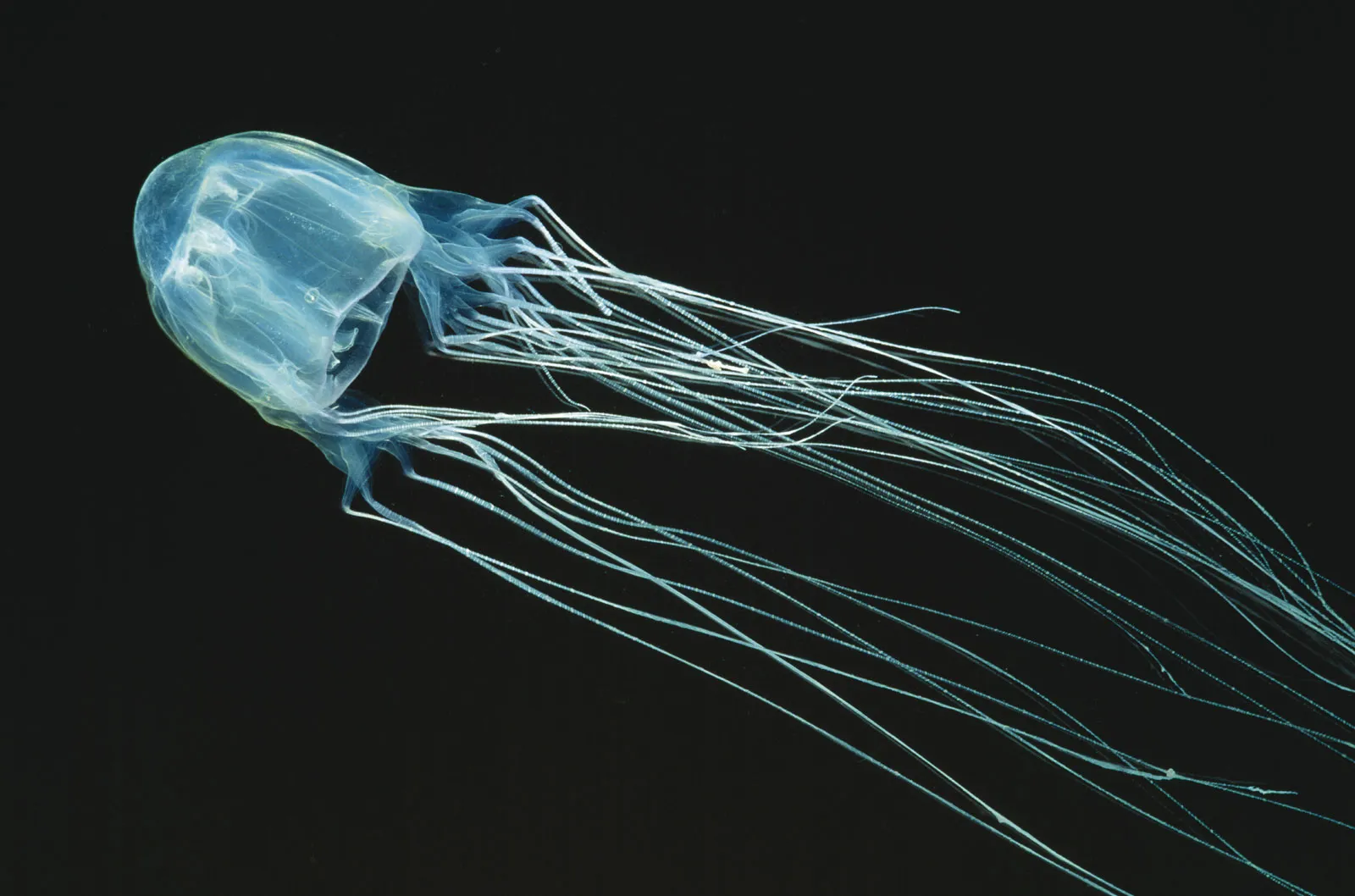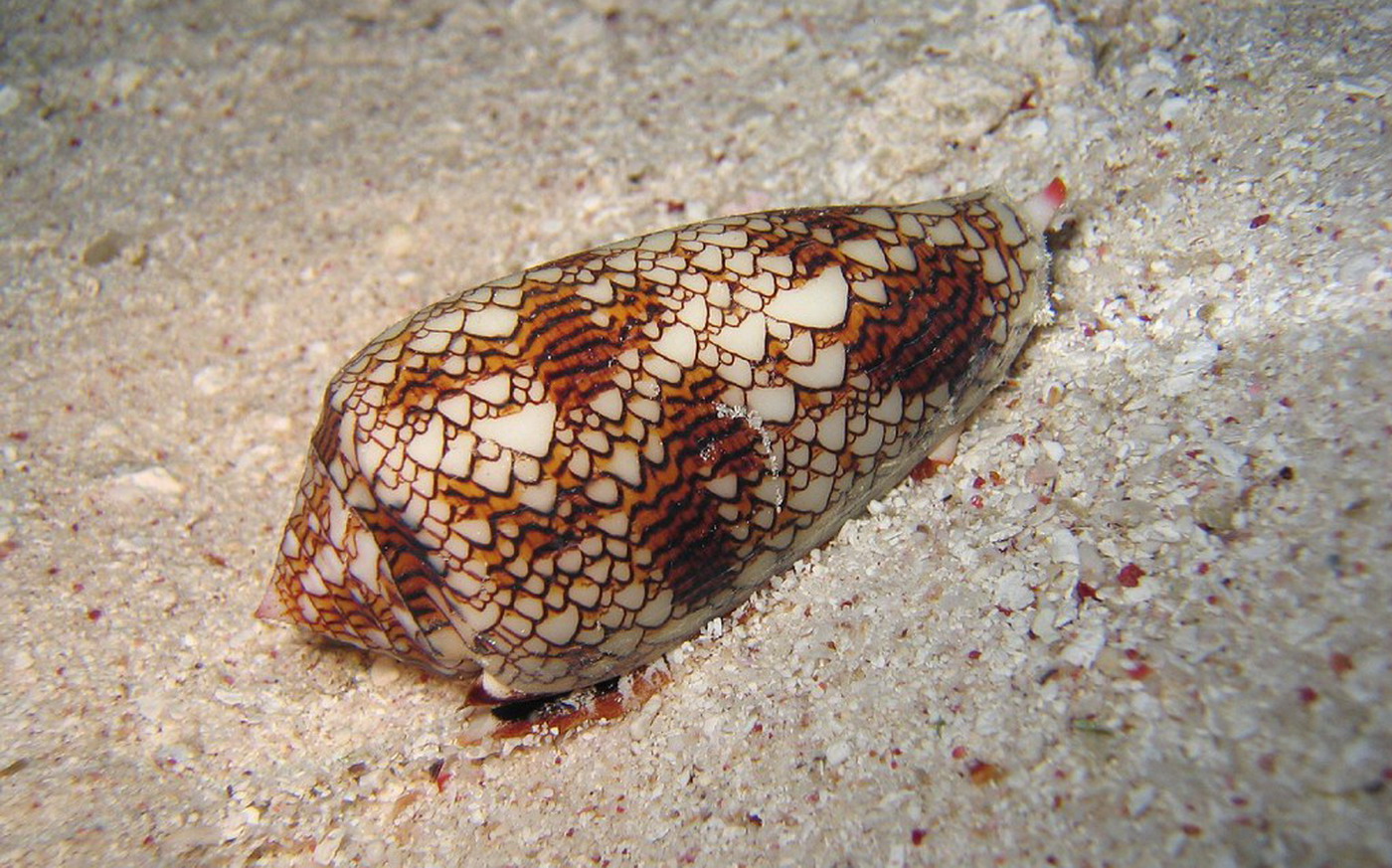It is generally believed that humans are at the top of the evolutionary food chain. However, this assertion is true only when they have solid ground beneath their feet. But as soon as they venture beyond the buoys, stepping out of the safety zone in the water, a bipedal creature can turn into someone’s breakfast, lunch, or dinner. Or even just a light snack. It all depends on the size of the predator.
Scientists have estimated that over 12,000 inhabitants of the underwater world can pose a potential threat to human life or health. After all, harm can be caused not only by large fish but also by small poisonous mollusks. Over billions of years, nature has created perfect underwater killers – they bite, inject venom, deliver shocks, use toxins, tear apart… And ultimately, whether a deep-sea resident attacks or defends, it doesn’t matter.
Great White Shark
Encountering this monster from the depths is not advisable. The first impression of it is quite deceptive: its bulky body and flabby gills do not inspire much reverence for the fish. It seems slow and clumsy. But in reality, the body of the great white shark is all muscle, and it attacks practically instantaneously.
The marine predator won’t even feign pleasantries; it will show most of its 300 teeth almost immediately. And it will be a perfectly calibrated predatory grin. Those who manage to survive such an encounter may rightfully consider themselves lucky.
Contrary to common belief, humans are not the preferred delicacy of the great white. Therefore, the fish will not show any special aggression towards us. However, if an unwary diver or fisherman happens to cross paths with a hungry five-meter machine, it won’t hesitate to snack. However, the underwater inhabitant may also devour its own kind, smaller individuals. It is precisely because of this fact that the great white shark has firmly established itself as a man-eater.
Blue-Ringed Octopuses
These creatures are also capable of misleading with their appearance. The amusing “polka-dot” pattern attracts attention, evoking a desire to touch or hold the sea creature in one’s hands. But this must never be done! Behind the cute facade hides a deadly creature – the venom of a toxic 25-centimeter beauty can kill 26 people if not given an antidote in time. The nervous system, affected by their secretions, shuts down in just a few minutes.

Blue-ringed octopuses are highly aggressive. Without experiencing fear, they act preemptively, attacking the enemy first. The horror of the situation lies in the fact that the mollusk’s bite is practically painless, so people may not always realize that they are in mortal danger. Meanwhile, the deadly substance spreads rapidly in the body, and in the struggle for life, every second counts. The sooner preventive measures are taken, the higher the chance of survival. There is no antidote to the venom of the blue-ringed octopus!
Salties Crocodile
This relic animal is the largest and oldest living predator on the planet. Unlike many of its relatives, this monster lives in salty seawater, considering coastal areas and beaches as its hunting grounds.
It can strike terror with just its appearance: males reach up to 5 meters in length and often weigh more than 2 tons. Salties kill plentifully and eagerly, attacking anything that moves and that they can handle. Since these large beasts are strong, aggressive, and nimble, the only real competitors for them can be other members of the same species. In the heat of the hunt, they can leap out of the water, propelling themselves with their tails from the bottom. For a human who has attracted the gastronomic interest of a salty monster, surviving is virtually impossible.
Box Jellyfish
These are the most dangerous jellyfish in the world. The paradox is that these creatures do not deliberately attack humans but are one of the most common causes of tourist fatalities. During high tides, box jellyfish often wash up on beaches.

The largest representatives of the species do not exceed 20 cm in diameter, but their thin tentacles, soaked in venom, can reach up to one and a half meters in length. The deadly stingers are very difficult to spot in the water, as their gelatinous bodies are practically transparent.
Even the slightest contact with the toxic substances secreted by jellyfish causes redness, followed by rapid swelling of the sting site. Manifestation of such symptoms is a reason to seek medical help immediately, as the next stage could be respiratory arrest and cardiac muscle spasm.
Cone Snails
These mollusks predominantly inhabit coral reefs, often attracting the attention of souvenir enthusiasts. Their externally attractive shell hides immense danger. Both sides of the cone snails’ shell are “equipped” with long defensive spikes, which the mollusk ejects for self-defense at a distance of up to 1 meter as soon as a person tries to touch them.

The toxin released causes burning at the affected area, loss of sensation, gradually progressing to paralysis. According to statistics, every third victim dies before the ambulance can transport them to the hospital.
Interestingly, cone snails are not harmless by nature. They are active predators with a keen sense of smell. If necessary, these mollusks can track their future prey for hours, but once they reach striking distance, the prey has little chance of survival.
To avoid falling into the jaws of sharp teeth, poisonous tentacles, and appearing spikes, it’s important to remember that it’s better to avoid accidents than to deal with their life-threatening consequences.
